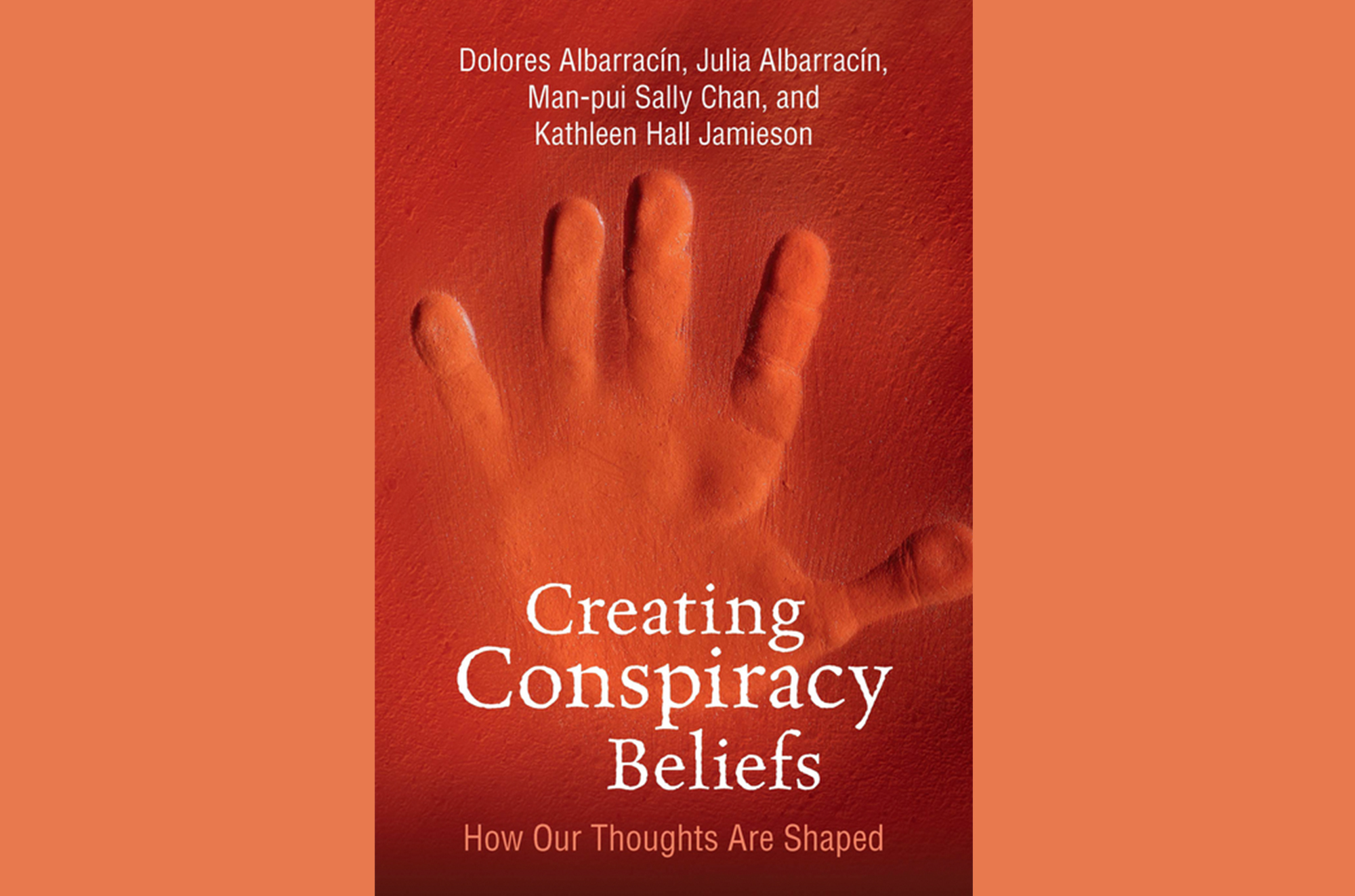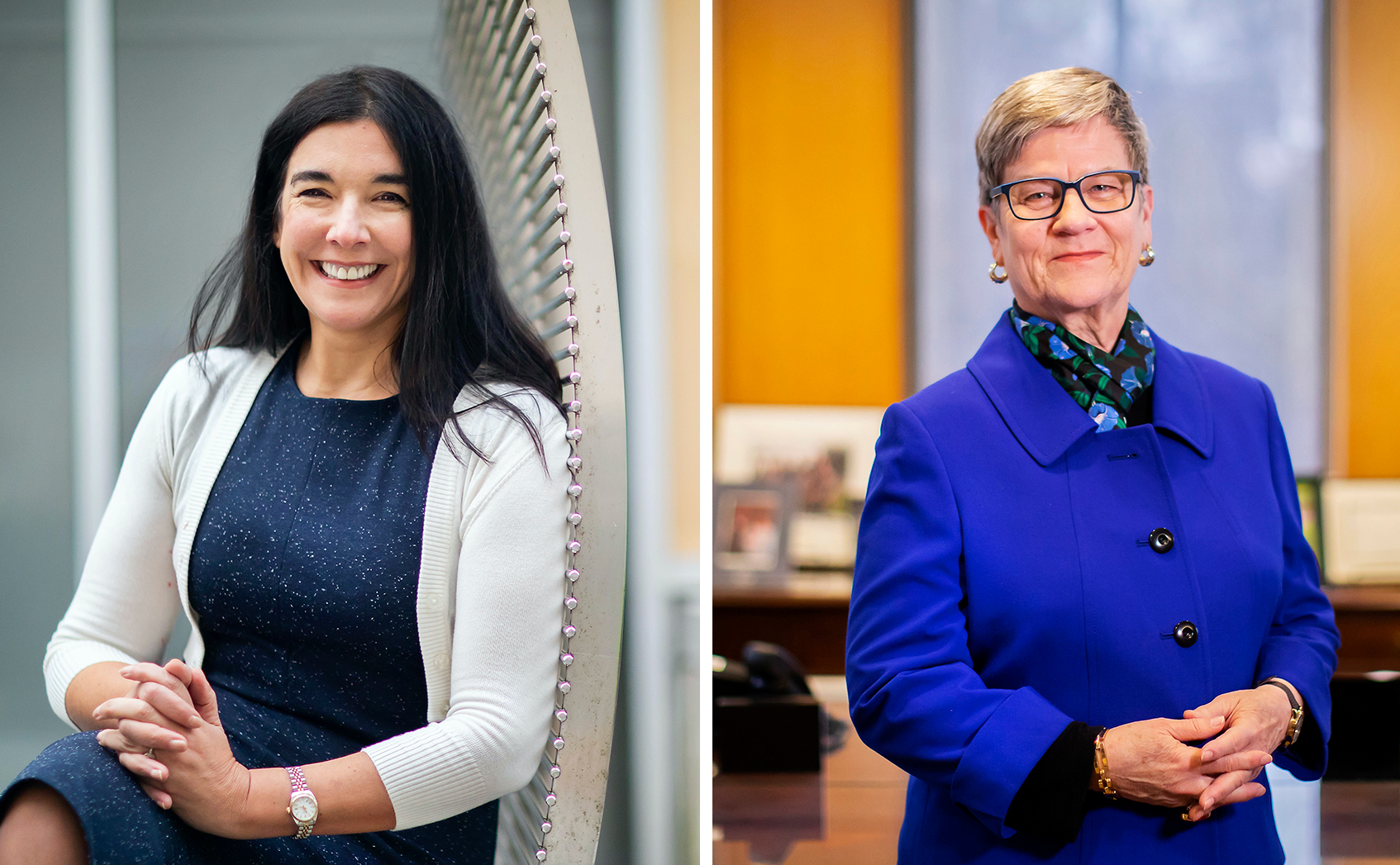A novel theory on how conspiracy theories take shape
How do people come to believe in conspiracy theories? It’s a question Penn Integrates Knowledge University Professor Dolores Albarracín has been thinking about for decades.
“I grew up in Argentina in the ’70s, during the Dirty War that eventually led to the disappearance of 30,000 Argentines. The climate within the dictatorship was such that you couldn’t really speak, and for a family that was politically involved such as mine, you were instructed to not say anything,” recalls Albarracín. “That piqued my interest in secrecy, and in how people make inferences about events that have presumably been covered up, particularly when there is no evidence.”
As a social psychologist and communication scholar who studies attitudes, persuasion, and behavior, Albarracín has researched what happens when fringe ideas become consequential for society. “That’s what we’re seeing with conspiracy theories today,” she says. “Nobody can deny now that these are wildly impactful and really problematic.”
In a new book, “Creating conspiracy beliefs: How our thoughts are shaped,” Albarracín and co-authors Man-pui Sally Chan and Kathleen Hall Jamieson of Penn and Julia Albarracín of Western Illinois University drill down into the phenomenon. Analyzing empirical research conducted on real-world examples of false plots—the alleged sex-trafficking ring Democrats ran out of a pizza parlor, the so-called deep state that undermined Donald Trump’s presidency—the team pinpoints two factors that have driven recent widespread conspiracy theories: the conservative media and societal fear and anxiety.
“The idea of this book is to explain, in cross-disciplinary detail, how it is that people have susceptibility to conspiracy beliefs and how their media consumption patterns in particular play a role in increasing the likelihood that they hold those beliefs,” says Jamieson, director of the Annenberg Public Policy Center (APPC).
“It’s an integration of all the factors that psychologists and other social scientists have been pointing to when it comes to figuring out why people believe in conspiracies,” Albarracín says. “These factors have been studied for quite some time. If you look at Google Scholar, for instance, you will find 116,000 references just linking conspiracy theories to personality.”
Yet Albarracín, Jamieson, and their colleagues didn’t think it likely that personality greatly affected whether someone believed in a conspiracy theory. Unlike with paranoia, which tends to focus on entities a person knows in real life—a boss, say, or a neighbor—in conspiracy theories, a large population of believers shares the same story, with the same character or characters. The researchers thought it made more sense to study social influence, which had been surprisingly neglected.
Across three cross-sectional surveys, an experiment, and a longitudinal panel study, that’s what they did. They also analyzed 400,000 tweets. All the work focused on conspiracy theories for which no plausible evidence currently exists, Jamieson says. “In other words, we have no reason to believe they’re true. But in people’s minds, they believe that that reality exists, and that belief has real consequences.”
Here, she mentions Pizzagate and Edgar Maddison Welch, who, in 2016, armed himself and entered Comet Ping Pong intending to stop the child abuse he “knew” to be happening in the pizza parlor’s basement by high-up Democrats—including Hillary Clinton herself.
“Even after he found no children, no abuse, he did not give up the conspiracy theory,” Jamieson says. “That tells us something very important, that there’s no evidence you can offer that would discredit a conspiracy theory. Any evidence you offer simply confirms the power of the conspirators to control your reality.”
For both health and political beliefs, conservative media are playing a large role in this process, according to Albarracín. “First, they are heightening anxiety in the population, which fuels conspiracy beliefs,” she says. “Secondly, they are directly injecting the content. So, if your media diet is mainly Fox News, then you’re more likely to also experience anxiety in the moment because of what’s being presented to you. The combination of the conspiracy stories and the content is powerful.”
The researchers didn’t see these same effects with liberal or mainstream media, or from social media. They say that points to a responsibility on the part of conservative media to make changes in what they highlight and how. Groups like APPC’s Factcheck.org and its SciCheck feature also must debunk false ideas as early as possible, before they become all-out conspiracies, Jamieson says. “Once people have moved into full-blown conspiracy thinking, it’s hard to get them out.”
These theories can have real consequences for both individuals and society, something made clear by examples like the January 2021 United States Capitol insurrection or the many Americans who remain unvaccinated against COVID-19. “Trying to understand from the perspective of multiple disciplines the circumstances under which conspiracy theories are most likely to arise and be accepted is extraordinarily important,” says Jamieson. “Providing that kind of understanding is a contribution of this book.”
Dolores Albarracín is the Alexandra Heyman Nash Penn Integrates Knowledge University Professor with appointments in the Annenberg School for Communication, the Department of Family and Community Health in the School of Nursing, the Department of Psychology in the School of Arts & Sciences, and the Department of Health Care Management in the Wharton School. She is also director of the Science of Science Communication Division at the Annenberg Public Policy Center and of the Social Action Lab at the University of Pennsylvania.
Kathleen Hall Jamieson is the Elizabeth Ware Packard Professor of Communication in the Annenberg School for Communication, Walter and Leonore Annenberg Director of the Annenberg Public Policy Center at Penn, and program director of the Annenberg Retreat at Sunnylands. She has authored or co-authored 17 books, including “Cyberwar: How Russian hackers and trolls helped elect a president,” which won the 2019 R.R. Hawkins Award, the Association of American Publishers’ highest prize.
Other book authors include Man-pui Sally Chan, a research associate at the Annenberg School for Communication at the University of Pennsylvania, and Julia Albarracín, a professor of political science at Western Illinois University and its 2022 distinguished faculty lecturer. “Creating conspiracy beliefs: How our thoughts are shaped” was published by Cambridge University Press (©November 2021).




